This two-storey building was originally a supermarket, built in the 1970s. Its stands on the site of the Duke of Wellington public house which was recorded here in 1828. The licensed premises now on this site are named after Doctor William Withering. Born in Wellington in 1741, he discovered and developed digitalis which is made from the dried leaves of the purple foxglove and used in the treatment of heart disease.
A plaque documenting the history of The William Withering.
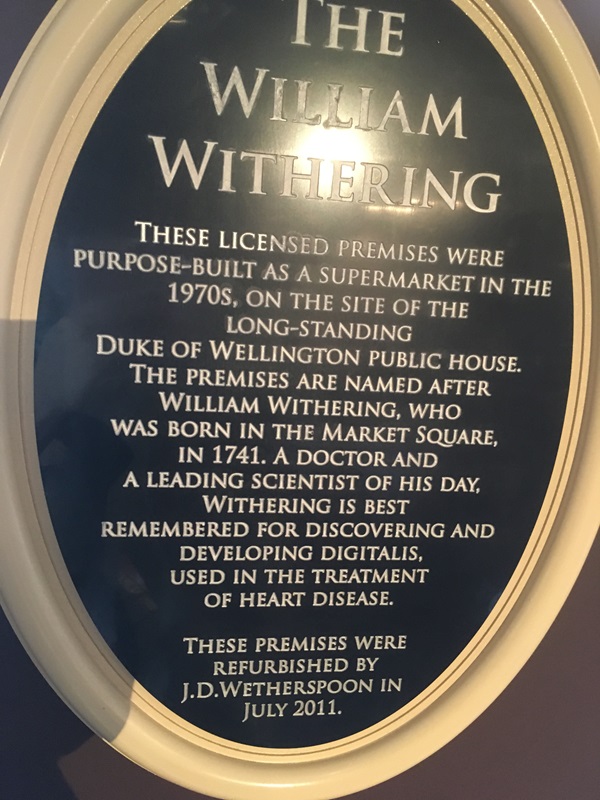
The plaque reads: These licensed premises were purpose built as a supermarket in the 1970s, on the site of the long standing Duke of Wellington public house. The premises are named after William Withering, who was born in the Market Square in 1741. A doctor and a leading scientist of his day, Withering is best remembered for discovering digitalis, used in the treatment of heart disease.
These premises were refurbished by J D Wetherspoon in July 2011.
Text about the history of Wellington.
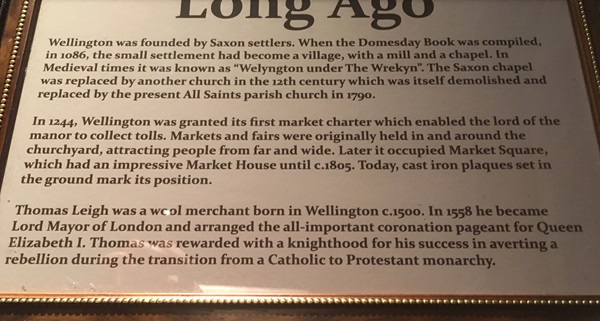
The text reads: Wellington was founded by Saxon settlers. When the Domesday Book was compiled, in 1086, the small settlement had become a village, with a mill and a chapel. In medieval times it was known as ‘Welyngton under the Wrekyn’. The Saxon chapel was replaced by another church in the 12th century which was itself demolished and replaced by the present All Saints Parish Church in 1790.
In 1244, Wellington was granted its first market charter which enabled the lord of the manor to collect tolls. Markets and fairs were originally held in and around the churchyard, attracting people from far and wide. Later it occupied Market Square, which had an impressive Market House until c1805. Today, cast iron plaques set in the ground mark its position.
Thomas Leigh was a wool merchant born in Wellington c1500. In 1558 he became Lord Mayor of London and arranged the all-important coronation pageant for Queen Elizabeth I. Thomas was rewarded with a knighthood for his success in averting a rebellion during the transition from a Catholic to Protestant monarchy.
Text about William Withering.
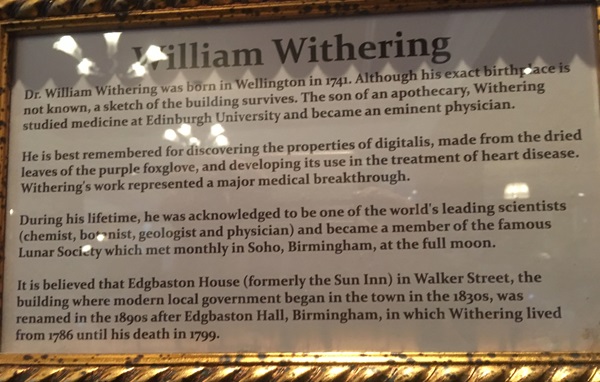
The text reads: Dr William Withering was born in Wellington in 1741. Although his exact birthplace is not known, a sketch of the building survives. The son of an apothecary, Withering studied medicine at Edinburgh University and became an eminent physician.
He is best remembered for discovering the properties of digitalis, made from the dried leaves of the purple foxglove, and developing its use in the treatment of heart disease. Withering’s work represented a major medical breakthrough.
During his lifetime, he was acknowledged to be one of the world’s leading scientists (chemist, botanist, geologist and physician) and became a member of the famous Lunar Society which met monthly in Soho, Birmingham, at the full moon.
It is believed that Edgbaston House (formerly the Sun Inn) in Walker Street, the building where modern local government began in the town in the 1830s, was renamed in the 1890s after Edgbaston Hall, Birmingham, in which Withering lived from 1786 until his death in 1799.
A portrait of William Withering, 1792.
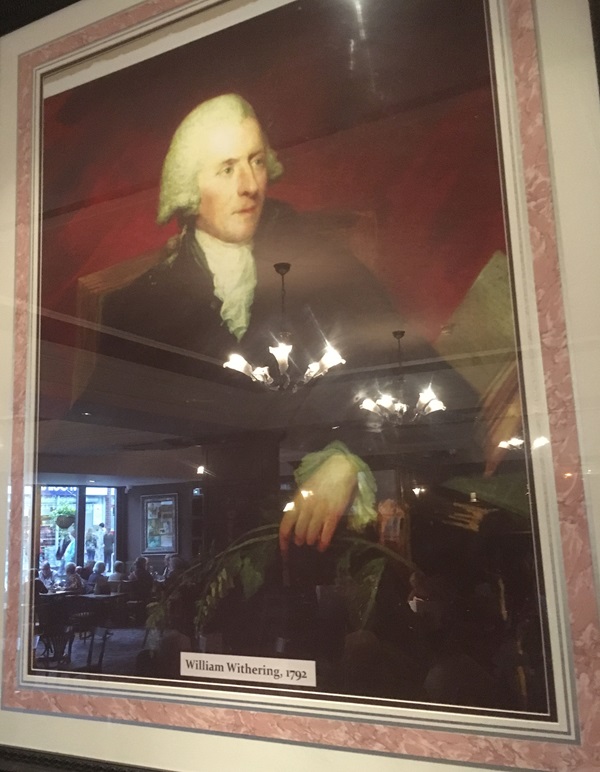
Text about The Duke of Wellington public house.
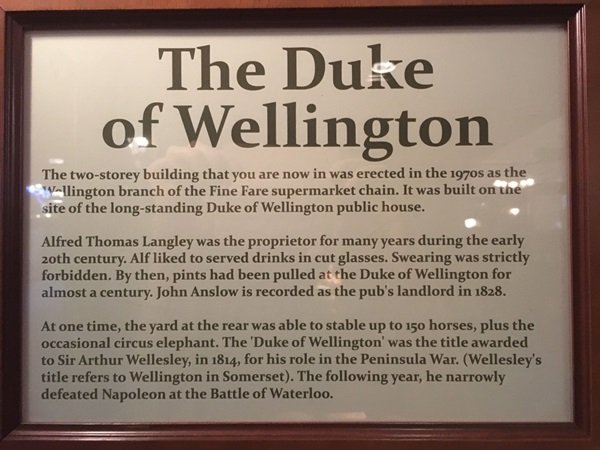
The text reads: The two storey building that you are now in was erected in the 1970s as the Wellington branch of the Fine Fare supermarket chain. It was built on the site of the long standing Duke of Wellington public house.
Alfred Thomas Langley was the proprietor for many years during the early 20th century. Alf liked to serve drinks in cut glasses. Swearing was strictly forbidden. By then, pints had been pulled at the Duke of Wellington for almost a century. John Anslow is recorded as the pub’s landlord in 1828.
At one time, the yard at the rear was able to stable up to 150 horses, plus the occasional circus elephant. The ‘Duke of Wellington’ was the title awarded to Sir Arthur Wellesley, in 1814, for his role in the Peninsula War. (Wellesley’s title refers to Wellington in Somerset). The following year, he narrowly defeated Napoleon at the Battle of Waterloo.
The Duke of Wellington sale plan, 1879.
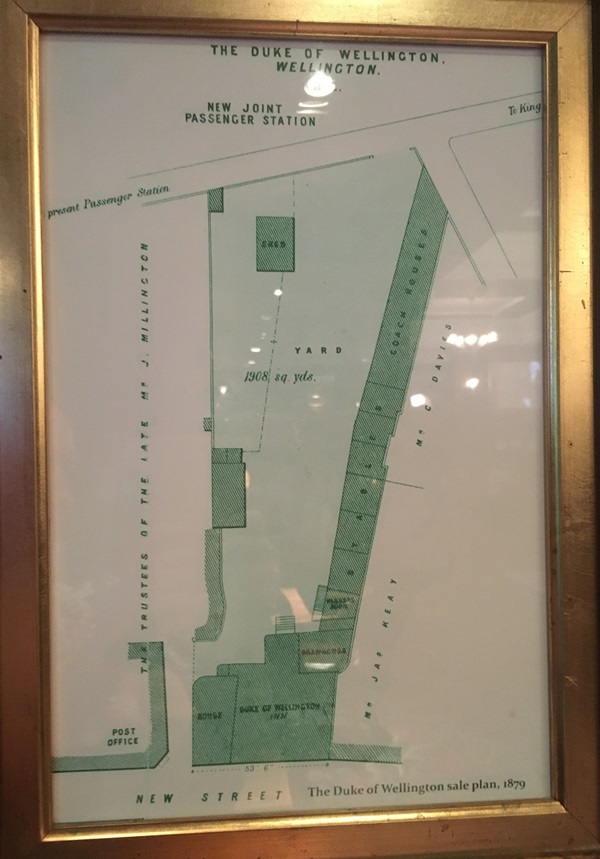
An illustration of the new parish church, c1895.
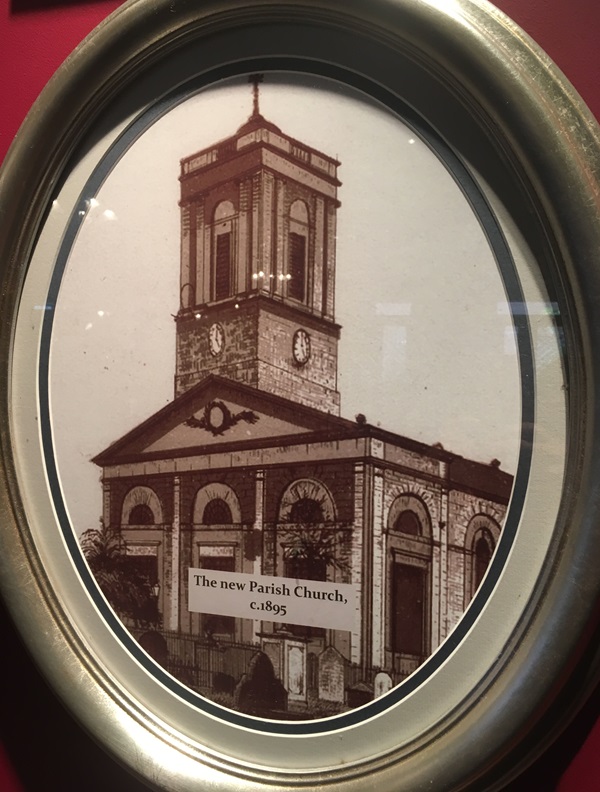
A photograph of The Duke of Wellington, 1960.
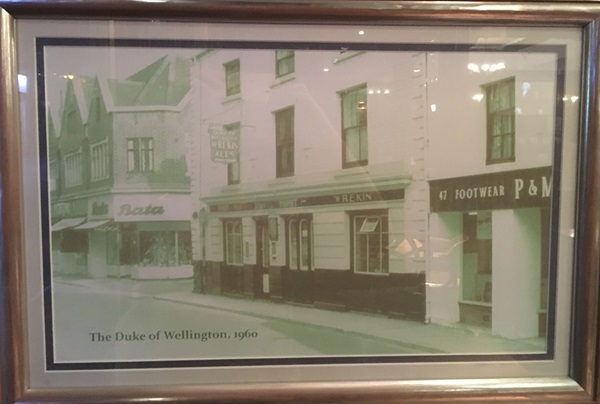
If you have information on the history of this pub, then we’d like you to share it with us. Please e-mail all information to: pubhistories@jdwetherspoon.co.uk